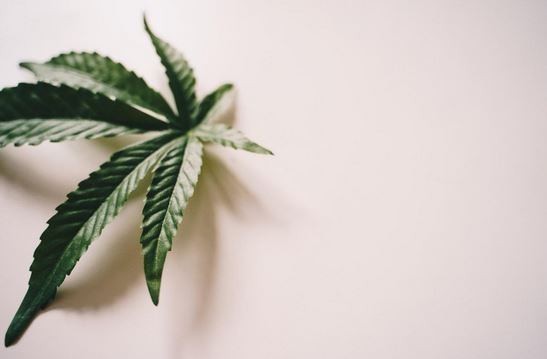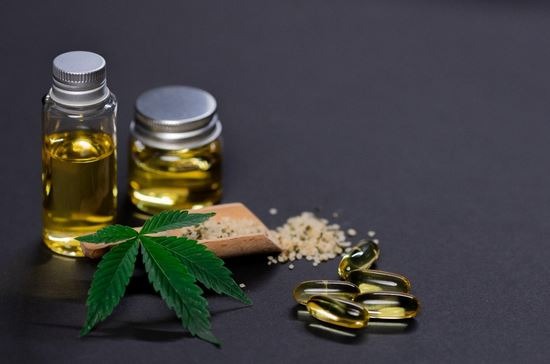When we look into the compounds found in cannabis, most people get hung up on cannabidiol (CBD) and delta-9-tetrahydrocannabinol (THC). Naturally, they are the main constituents of the plant, which have stolen the spotlight given their potency and application. However, there are over 100 compounds in marijuana that, despite their small concentration, significantly impact how weed affects the user. Most of these chemical elements interact with the consumers’ physiological functions to deliver lasting effects and benefits. One of these compounds is cannabidivarin, or CBDV, which is a highly underestimated cannabinoid with massive potential. This article highlights CBDV, its composition, mechanism of action, effects on the consumer, and how it differs from everyone’s favorite cannabinoid, CBD.
What Is CBDV?
Cannabidivarin (CBDV) is defined as a non-intoxicating, psychoactive cannabinoid that naturally occurs in cannabis, meaning that it doesn’t produce the euphoric high or stoned effect typically associated with weed consumption. It tends to be present in higher concentrations in low-THC marijuana cultivars, such as hemp and strains with a high CBD content. This compound is found in higher concentrations in cannabis Indica landrace cultivars originally from Afghanistan, India, and Pakistan and thrives in hot and dry temperate conditions. CBDV is a homolog to CBD, with its side chain shortened by two methylene bridges (CH2 units). It has a similar chemical structure and mechanism of action as CBD, which we will explore in detail. This compound is also referred to as cannabidivarol.
How Is CBDV Extracted?
CBDV is a minor cannabinoid that is not abundant in most cannabis strains. It’s interesting to note that many native African hemp and marijuana plants have higher concentrations of this cannabinoid. Breeders can produce cannabis plants with more significant CBDV contents by genetically modifying plants.
Manufacturers usually harvest these CBDV-rich hemp strains and utilize conventional hemp extraction techniques like CO2 extraction or ethynol to separate a sticky resin high in the plant’s natural cannabinoids and terpenes. Some producers will go a step further and isolate specific cannabinoids for further use separately from each other. Generally speaking, full-spectrum extracts that closely mirror the plant’s natural phytochemical composition deliver more potent and well-balanced effects than isolated cannabinoids. Some of the cannabis variants with high CBDV include Pine Walker, Forbidden V, and Royal CBDV.
What Is the Difference between CBD and CBDV?
CBD and CBDV have few distinctions, most likely because CBDV is a chemical cousin of CBD. Additionally, the lack of extensive research on CBDV makes it harder to understand their differences. One of the most evident distinctions is their chemical structure. While the cannabinoids are quite similar, CBDV has a propyl chain, whereas CBD has a pentyl chain.
Another distinction is the level of public awareness of each cannabinoid’s health benefits. While most people are familiar with a widely marketed CBD, CBDV remains significantly under-researched. Nevertheless, with quick advancements in clinical and chemical research of cannabis, the situation is expected to change soon.
The Chemical Properties of CBD and CBDV
Cannabidiol is a cyclohexene cannabinoid, which is substituted by a methyl group. It is a major phytocannabinoid with at least 85 active compounds, accounting for approximately 40% of the plant’s extract. Cannabidivarin is a monoterpenoid with a similar chemical formula, which only differs by two methyl groups on its side chain. CBD and CBDV follow a similar biosynthesis pathway due to their molecular and chemical composition similarity.
As with most cannabinoids, both of these compounds have low solubility in water but are soluble in most organic solvents like alcohols and lipids. They are both naturally available in their acidic forms, which get decarboxylated and chemically changed upon heating. Remember that most cannabis products are exposed to heat during or before consumption, whether smoked, cooked, or otherwise processed for shelved products such as oils, creams, and gummies.
Mechanisms of Action: CBD vs. CBDV
Cannabis is widely used as a therapeutic drug, especially for patients with psychiatric issues and neurodegenerative diseases. Although the complex interplay of the chemical compounds in the plant and the human endocannabinoid system (ECS) is still under research, the current dataset reveals that CBD interactions with the CB1 and CB2 receptors alleviate symptoms of psychiatric diseases.
In contrast, CBDV interactions mainly target neurological issues. Cannabidivarin alleviates neuroinflammation by targeting the TLR4 co-receptor MD2 and delivers better and faster effects than opioid-based medication without addictive results.
Although CBD and CBDV can be consumed for pain management, research reveals that CBDV is more effective in treating neurological pain than CBD. This is due to its lipophilicity and blood-brain barrier (BBB) penetrability, heightening its ability to modulate neurological inflammations. Both non-psychotropic cannabinoids are helpful as anticonvulsants, analgesics, and anti-inflammatories.
Potential Medical Benefits of CBDV
Most of the research on CBDV is centered around its effect on the neurochemical pathway of capsaicin receptors involved in the onset and progression of different types of epilepsy. CBDV is a significant component of the FDA-approved CBD-based drug, Epidiolex, which has shown a significant impact in treating in vitro and in vivo models of epilepsy. CBDV is also being studied for the treatment of several other conditions, such as:
- Rett Syndrome. This neurobehavioral issue mainly affects girls with seizures, muscle spasticity, and speech problems. CBDV has been proven to curb the symptoms of this condition.
- Duchenne muscular dystrophy (DMD). In 2019, the British Journal of Pharmacology published that CBDV helps to reduce inflammation and restore and enhance muscle function in patients with DMD.
- Childhood intractable epilepsy and autism spectrum disorder (ASD). CBDV is under research for its potential treatment of advanced ASD symptoms such as cognitive challenges, repetitive behavioral issues, and social functioning and communication issues.
- Creutzfeldt-Jakob disease and Alzheimer’s disease. CBDV is being clinically tested for its ability to rescue common memory defects in patients with these two conditions.
CBDV is also a potent anti-emetic agent since it is a powerful anti-nausea drug that acts as an antagonist to the CB1 receptors by blocking the nausea response.
Safety and Side Effects of CBD and CBDV
These two compounds are very similar in composition and interaction with the human body system, so they also have closely related effects and side effects. Like CBD, CBDV is non-intoxicating and is considered safe and well-tolerated by most consumers. The adverse effects of both substances are mild and short-term and can be mitigated by using high-quality products and adjusting the dosage. Some of the side effects include:
- Dizziness
- Upset stomach
- Diarrhea
- Drowsiness
- Lethargy
- Headaches
Conclusion
As our review suggests, the therapeutic advantages provided by CBDV and CBD are very similar. They imply that both cannabinoids could be successfully applied in the medical field. In many ways, cannabidivarin is similar to cannabidiol, but it has several distinguishing characteristics that set it apart. CBDV mostly benefits people suffering from neurological illnesses, epilepsy, and seizures. CBDV’s anticonvulsant, anti-epileptic, and anti-nausea properties, on the other hand, warrant further research and development to ensure the safety and efficacy of the chemical element is ascertained before the general administration of the substance for such sensitive conditions.
If you are wondering where to buy products rich in CBDV vs CBD https://askgrowers.com/blog/what-is-cbdv-and-how-is-it-different-from-cbd can be a good starting point for further research on this subject. Visit the site to find a wide range of quality products and get more information about CBDV. As with every cannabis-based product, you must consult your medical practitioner before introducing CBD or CBDV into your dietary or medical regimen, as they are both potent substances requiring close monitoring and precise dosage.
The author of this material is Denys Svirepchuk, an expert in cannabis technology and an active researcher of innovations in this industry. Denys writes for the AskGrowers blog to share his findings and recent research publications about the value of cannabinoids and their broadening range of use cases.



